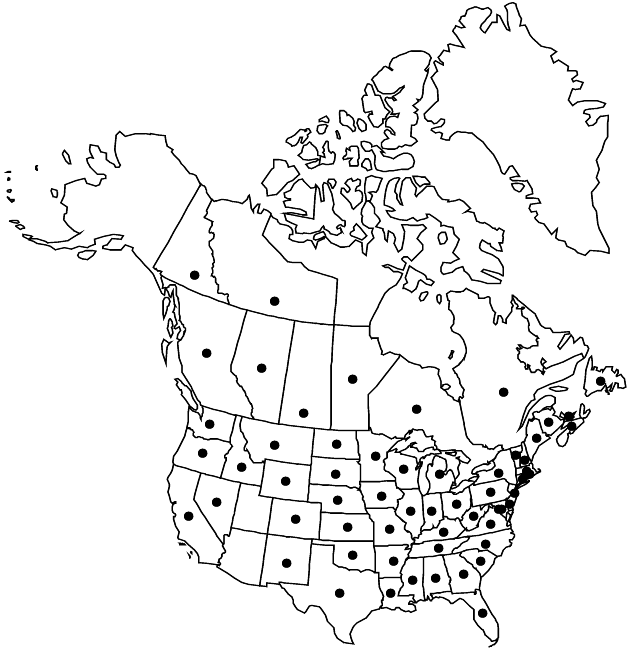Difference between revisions of "Erigeron philadelphicus"
Sp. Pl. 2: 863. 1753.
FNA>Volume Importer |
RevisionBot (talk | contribs) m (Bot: Adding category Revised Since Print) |
||
| (8 intermediate revisions by 3 users not shown) | |||
| Line 8: | Line 8: | ||
}} | }} | ||
|common_names=Philadelphia fleabane;vergerette de Philadelphie | |common_names=Philadelphia fleabane;vergerette de Philadelphie | ||
| + | |special_status={{Treatment/ID/Special_status | ||
| + | |code=F | ||
| + | |label=Illustrated | ||
| + | }}{{Treatment/ID/Special_status | ||
| + | |code=E | ||
| + | |label=Endemic | ||
| + | }} | ||
|basionyms= | |basionyms= | ||
|synonyms= | |synonyms= | ||
| Line 20: | Line 27: | ||
-->{{Treatment/Body | -->{{Treatment/Body | ||
| − | |distribution= | + | |distribution=Alta.;B.C.;Man.;N.B.;N.S.;N.W.T.;Nfld. and Labr. (Nfld.);Ont.;P.E.I.;Que.;Sask.;Yukon;Ala.;Ark.;Calif.;Colo.;Conn.;D.C.;Del.;Fla.;Ga.;Idaho;Ill.;Ind.;Iowa;Kans.;Ky.;La.;Maine;Mass.;Md.;Mich.;Minn.;Miss.;Mo.;Mont.;N.C.;N.Dak.;N.H.;N.J.;N.Mex.;N.Y.;Nebr.;Nev.;Ohio;Okla.;Oreg.;Pa.;R.I.;S.C.;S.Dak.;Tenn.;Tex.;Va.;Vt.;W.Va.;Wash.;Wis.;Wyo.;introduced worldwide in temperate areas as a weed. |
|discussion=<p>Varieties 3 (3 in the flora).</p> | |discussion=<p>Varieties 3 (3 in the flora).</p> | ||
|tables= | |tables= | ||
| Line 52: | Line 59: | ||
-->{{#Taxon: | -->{{#Taxon: | ||
name=Erigeron philadelphicus | name=Erigeron philadelphicus | ||
| − | |||
|authority=Linnaeus | |authority=Linnaeus | ||
|rank=species | |rank=species | ||
| Line 59: | Line 65: | ||
|basionyms= | |basionyms= | ||
|family=Asteraceae | |family=Asteraceae | ||
| − | |distribution= | + | |distribution=Alta.;B.C.;Man.;N.B.;N.S.;N.W.T.;Nfld. and Labr. (Nfld.);Ont.;P.E.I.;Que.;Sask.;Yukon;Ala.;Ark.;Calif.;Colo.;Conn.;D.C.;Del.;Fla.;Ga.;Idaho;Ill.;Ind.;Iowa;Kans.;Ky.;La.;Maine;Mass.;Md.;Mich.;Minn.;Miss.;Mo.;Mont.;N.C.;N.Dak.;N.H.;N.J.;N.Mex.;N.Y.;Nebr.;Nev.;Ohio;Okla.;Oreg.;Pa.;R.I.;S.C.;S.Dak.;Tenn.;Tex.;Va.;Vt.;W.Va.;Wash.;Wis.;Wyo.;introduced worldwide in temperate areas as a weed. |
|reference=None | |reference=None | ||
|publication title=Sp. Pl. | |publication title=Sp. Pl. | ||
|publication year=1753 | |publication year=1753 | ||
| − | |special status= | + | |special status=Illustrated;Endemic |
| − | |source xml=https:// | + | |source xml=https://bitbucket.org/aafc-mbb/fna-data-curation/src/2e0870ddd59836b60bcf96646a41e87ea5a5943a/coarse_grained_fna_xml/V19-20-21/V20_715.xml |
|tribe=Asteraceae tribe Astereae | |tribe=Asteraceae tribe Astereae | ||
|genus=Erigeron | |genus=Erigeron | ||
| Line 70: | Line 76: | ||
}}<!-- | }}<!-- | ||
| − | -->[[Category:Treatment]][[Category:Erigeron]] | + | --> |
| + | |||
| + | [[Category:Treatment]] | ||
| + | [[Category:Erigeron]] | ||
| + | [[Category:Revised Since Print]] | ||
Latest revision as of 18:29, 6 November 2020
Annuals, biennials, or short-lived perennials, 4–80 cm; fibrous-rooted, caudices simple. Stems erect (green proximally, leafy to arrays), hirsuto-villous to villous proximally, loosely strigose to sparsely hirsute distally, minutely glandular. Leaves basal (persistent or withering by flowering) and cauline; basal blades oblanceolate to obovate, (15–)30–110(–150) × 10–25(–40) mm, margins shallowly crenate to coarsely serrate or pinnately lobed, faces sparsely hirsute to villous, eglandular; cauline blades oblong-oblanceolate to lanceolate, gradually reduced distally (bases clasping to auriculate-clasping). Heads (1–)3–35 usually in corymbiform arrays (ultimate branches arising near stem tips). Involucres 4–6 × 6–15 mm. Phyllaries in 2–3 series (sometimes basally connate), hirsuto-villous to sparsely hirsute or glabrous, sometimes minutely glandular. Ray florets 150–250(–400); corollas usually white, sometimes pinkish, 5–10 mm, laminae not coiling or tardily coiling. Disc corollas 2.1–3.2 mm. Cypselae 0.6–1.1 mm, 2-nerved, faces sparsely strigose; pappi: outer of setae, inner of 15–20(–30) bristles.
Distribution

Alta., B.C., Man., N.B., N.S., N.W.T., Nfld. and Labr. (Nfld.), Ont., P.E.I., Que., Sask., Yukon, Ala., Ark., Calif., Colo., Conn., D.C., Del., Fla., Ga., Idaho, Ill., Ind., Iowa, Kans., Ky., La., Maine, Mass., Md., Mich., Minn., Miss., Mo., Mont., N.C., N.Dak., N.H., N.J., N.Mex., N.Y., Nebr., Nev., Ohio, Okla., Oreg., Pa., R.I., S.C., S.Dak., Tenn., Tex., Va., Vt., W.Va., Wash., Wis., Wyo., introduced worldwide in temperate areas as a weed.
Discussion
Varieties 3 (3 in the flora).
Selected References
None.
Lower Taxa
Key
| 1 | Cauline leaf faces sparsely hirsute to villous | Erigeron philadelphicus var. philadelphicus |
| 1 | Cauline leaf faces glabrous or glabrate | > 2 |
| 2 | Leaves of basal rosettes withering by flowering; salt marshes, British Columbia | Erigeron philadelphicus var. glaber |
| 2 | Leaves of basal rosettes persistent through flowering; crevices in shale or dolomite, usually beside rivers or lakes, Ontario, Quebec, New York, and Vermont | Erigeron philadelphicus var. provancheri |